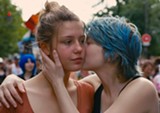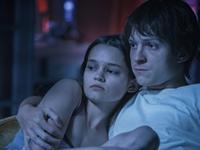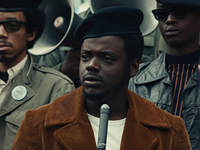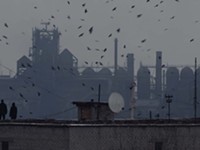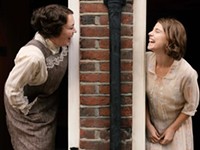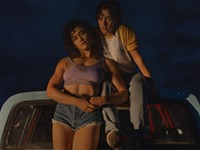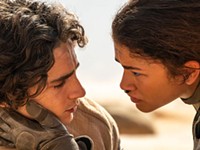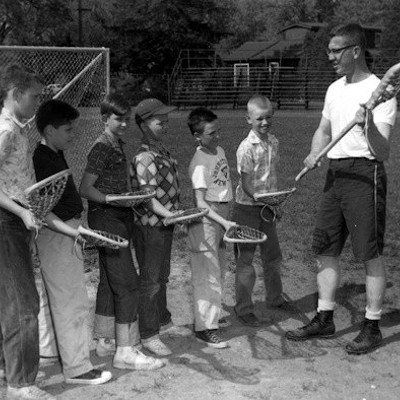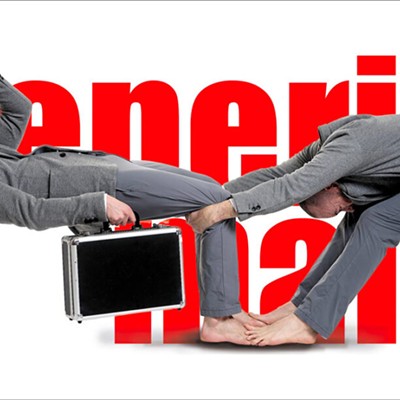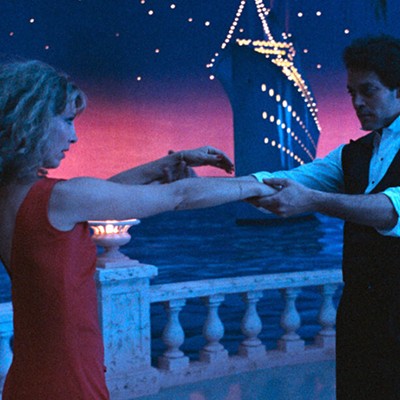[
{
"name": "500x250 Ad",
"insertPoint": "5",
"component": "15667920",
"parentWrapperClass": "",
"requiredCountToDisplay": "1"
}
]
Three hours of the new French film, "Blue is the Warmest Color," should convince even the most ardent Francophiles that the nation has lost its way and drawn a number of film critics along with it. Inspiring considerable discussion before it achieved a wide release, the movie deals with a familiar subject — a young woman's sexual awakening — but aroused some controversy because of its relatively graphic presentation of sexual acts, earning it the dreaded NC-17 rating, which often kills a motion picture.
The director consumes much of those three hours tracing the life of its protagonist, Adèle (Adèle Exarchopoulos), from high school to her profession as a kindergarten teacher, a course that proceeds in an oddly disjointed manner. Adèle goes to school every day, performs well in her French and English classes, endures some mild teasing from her friends about her innocence, and dates an older schoolmate, Thomas (Jérémie Laheurte). She and Thomas sleep together, but she finds the sex unfulfilling and then, for no particular reason, Thomas breaks up with her, one of several rejections she suffers in the film.
Consoled by her gay friend and confidant Valentin (Sandor Funtek) — an obligatory character in such movies — she first visits a gay bar with him, then wanders into a lesbian bar, an act that changes her life. She meets and ultimately falls in love with Emma (Léa Seydoux), a graduate student in art who dyes her hair blue and introduces Adèle to a different kind of lovemaking. Their relationship, which apparently continues for some years, provides the reason for the movie's controversial context.
"Blue is the Warmest Color" actually justifies all the clichés about the French that we have all learned over the years — that when they aren't discussing philosophy in picturesque cafes, they spend their time consuming wonderful food, drinking good wine, and having great sex. When she isn't pouting or blubbering, Adèle eats almost all the time, enjoying lunches and dinners with friends and family, stuffing her face with gyros, pasta, oysters, chicken, and at night when she cries, a drawerful of candy bars. More important, she and Emma enjoy a number of lengthy sexual episodes, in which they entangle themselves in several complicated and remarkable erotic arabesques, quite varied and most unusual.
As for the intellectual side of French culture, Emma's friends and colleagues discuss Sartre and Existentialism, which apparently still preoccupies the nation, and she and another friend debate the relative quality of Gustav Klimt and Egon Schiele. Adèle, by the way, confesses she knows nothing about art or philosophy and has never heard of Sartre, Klimt, or Schiele.
Aside from all the eating and drinking, which looks most appetizing, the sex, appetizing perhaps in a different way, and the intellectual discourse, which seems quite phony, the picture moves rhythmically, clunking along in a literal, linear fashion for much of its length, then skipping any sort of transition to move from one time to another. Adèle's school days, for example, plod slowly for what seems like hours, then suddenly the movie shows her teaching a class full of delightful little kindergarteners, with no explanation of how she got from high school, through college, and into her profession.
The director appears to have studied at the feet of Eric Rohmer, whose films give French cinema a bad name. Despite all the odd lacunae, his literal approach to plotting shows a refusal to employ the efficiency of a wonderful visual medium, choosing instead a step-by-step narrative, a relentless repetition of action and dialogue. The fact that "Blue is the Warmest Color" takes three hours to tell its simple story suggests the failure of the director's method; any self-respecting Hollywood hack could trim an hour off the picture's inordinate length.
His camera work exhibits the same unimaginative approach, filming almost everything at eye level, with innumerable tight close-ups, and especially, a tiresome attention to Adèle Exarchopoulos's mostly impassive face. The credits at the end of "Blue is the Warmest Color" state that the movie consists of chapters one and two; in keeping with the open-ended conclusion, other chapters in the long, dull story may follow. Zut alors and sacre bleu, that means we may all find snails in our escargot.
Speaking of...
Latest in Movie Reviews
More by George Grella
-
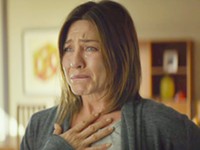
Film Review: "Cake"
Jan 26, 2015 -

Film Review: "American Sniper"
Jan 19, 2015 -
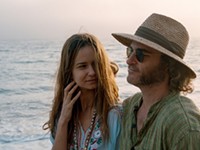
Film Review: "Inherent Vice"
Jan 12, 2015 - More »
